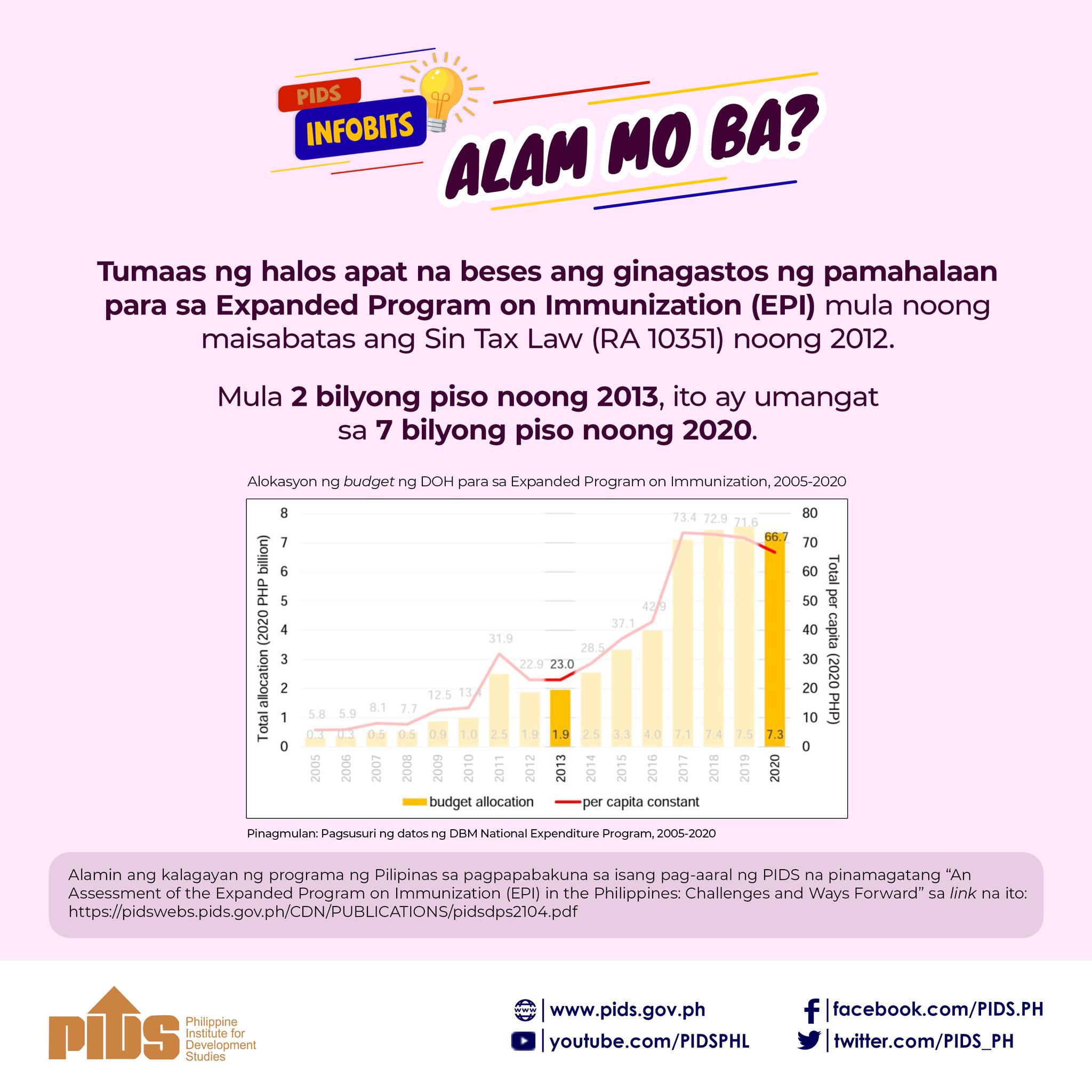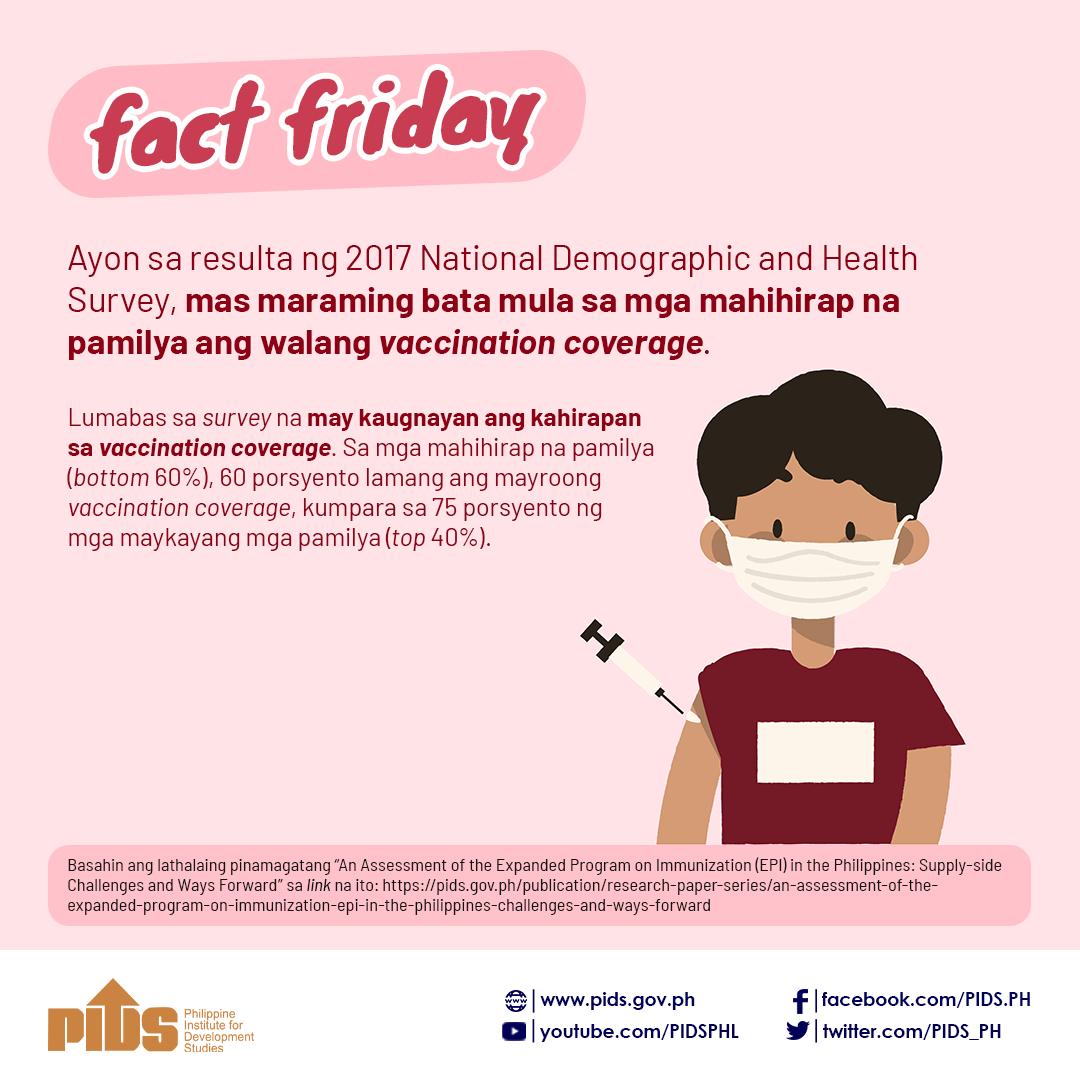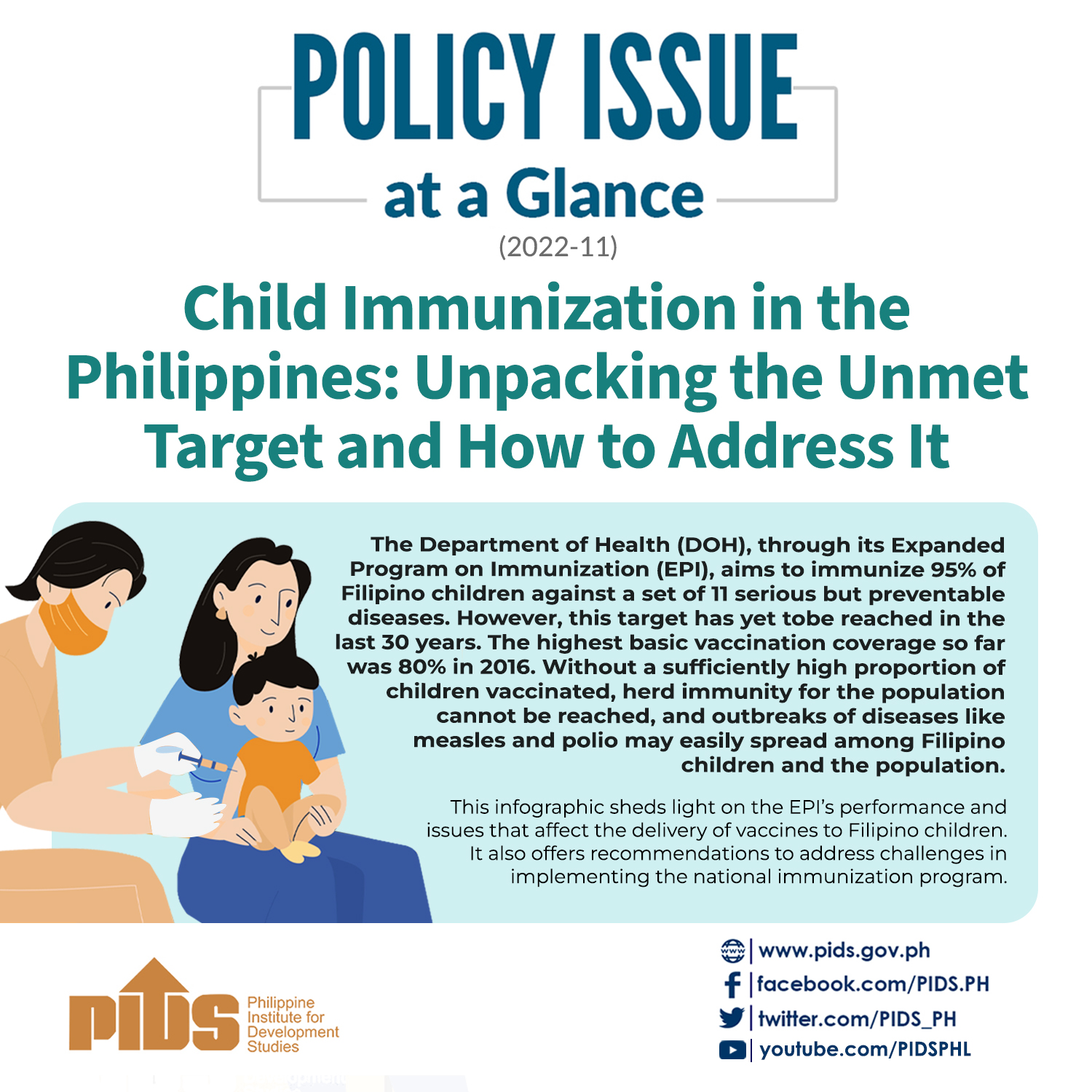Despite being in existence for over 40 years, the Philippine Expanded Program on Immunization (EPI) has not achieved its goal to fully immunize 95 percent of Filipino children, according to a study released by the Philippine Institute for Development Studies (PIDS).
PIDS Research Fellow Valerie Gilbert Ulep and Supervising Research Specialist Jhanna Uy said in their study revealed that basic vaccinations only covered 70 percent to 80 percent of children in the last 30 years.
Ulep and Uy said basic vaccination coverage for Bacillus Calmette–Guerin (BCG) for Tuberculosis; three doses of Oral polio vaccine (OPV), three doses of vaccine for Diphtheria, tetanus and pertussis (DPT); and one dose on measles.
“The Philippine EPI has shown inconsistent performance in the last few years,” the authors said. “Without large investments and path-breaking reforms in the current system of delivery, financing, and leadership, universal coverage targets will remain quixotic, at best,” they said.
The researchers found that immunization coverage of most regions suffered declines in recent years as Region 12 and Autonomous Region in Muslim Mindanao (ARMM) recorded alarming declines in the past few years.
Data showed that coverage in the Region 12 declined to 40 percent in 2017, from 80 percent in 2013, while coverage in ARMM declined to 20 percent in 2017 from 40 percent in 2013.
The authors also noted that since the 1993 National Demographic Health Survey (NDHS), ARMM has not had basic vaccination coverage of above 50 percent.
Further, a substantial number of children were not completing their vaccine series. In 2017, only 70 percent had complete basic vaccination.
For measles vaccination, almost 30 percent of children who had their first doses did not complete the required second dose.
Based on regression results, the authors said children of mothers with limited educational backgrounds and with narrow access to maternal health-care services were more likely to miss later doses in the vaccination series.
Ulep and Uy said while routine child immunization was financed by the government through the Department of Health (DOH), there is no sufficient data on private sector financing.
“Data on private sector spending on vaccination is neither systematically collected nor analyzed; therefore, the total spending on vaccines in the country remains largely unknown,” they said.
The researchers said that while EPI was a priority program of the DOH in 2020, the EPI accounted for only 7 percent of the annual DOH budget.
From 2005 to 2020, public spending on EPI dramatically increased even after adjusting for population growth and inflation.
Ulep and Uy said expenditures have increased four-fold after sin tax revenues were allocated to EPI to P7 billion in 2020 from P2 billion in 2013.
“Only 1 percent to 1.5 percent of the DOH EPI budget is typically allocated for the cold and supply chain and less than 1 percent for soft components. Investments on human resources such as capacity building and training were utterly negligible,” the researchers noted.
To address vaccine issues, Ulep and Uy recommended that DOH should consider multi-year planning and procurement with local manufacturers and interface this with UNICEF.
The agency can avail of the Multi-Year Obligation Authority (MYOA) from Department of Budget and Management (DBM) to reduce the uncertainty that comes with annualized procurement.
Efforts to increase the technical staff of the program and that the leadership should have sufficient foresight on the future needs of the program as well as the ability to communicate these needs within and outside the government.
For the medium to long-term, Ulep and Uy recommended that optimize efficiency, timeliness, and equity in the uptake of vaccines, as well as align the financing and service delivery in accordance with the Universal Health Care Act of 2019.
The government should also allow more health workers from public and private institutions to provide routine vaccination. This, however, will require amendments of certain laws.
Efforts should also be exerted toward improving and investing in vaccine cold and supply chains. The authors recommended that the government create a formal and organized distribution system and explore contracting out the whole supply chain, or parts of it, to the private sector.
40 years hence, PHL’s full immunization goal for children remains a ‘quixotic’ quest – PIDS












